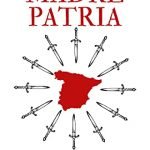
Contents
What was the pirate boarding like?
Boarding was their method of combat, which avoided spoiling the booty. Booty was their objective, whether it was money, jewels, weapons, merchandise, prisoners or even the ship itself.
It was the boarding of the ship, a way to seize the ship, without spoiling what was inside it. They made little use of cannons and above all the melee. Pirate attacks were almost always with advantage.
Boarding, your attack
Their fighting and combat tactics. merciless boarding.
They avoided using cannons, as they were not interested, because they were so destructive that you could spoil their booty, ship, merchandise, passengers, etc. They used to be used as a warning or as a last resort.
Feared for their cruelty
If there was not enough resistance, it was best to stop the ship in time.
Pirates used special weapons and ways of fighting that gave them an advantage in combat. They were professionals, seasoned in many boardings, and heavily armed. They used force and terror to take what they wanted, by hook or by crook.
Filibusters instilled terror
Even before attacking their victims
Thieves or mercenaries looking for loot, roaming islands and seas. They were waiting for their big chance to catch a prey. And if they found it, they were like dogs of prey that would not let go of their victim until they had completely dominated it.
They were professionals with weapons. Their livelihood depended on their ability to use them. Some buccaneers turned Filibusteros pirates, were true champions at shooting from a distance at all kinds of moving animals. They applied these skills to piracy, shooting at the helmsmen to prevent them from properly steering the ship.
They were mercenaries of the sea, whose reward was booty, and they also used terror to paralyze passengers and sailors.
Attacks on ships
They usually attacked merchant ships, crewed by seafarers, sailors with no experience in handling weapons.
All tricks were good to terrorize the other crew. The pirate flag with its sharks and skulls already warned that nothing good was coming. If it was also red, it meant that the pirates would raze the ship to the ground.
They also used all kinds of tricks, which gave them an advantage in boardings, such as throwing giant thumbtacks that destroyed the feet of the crew members, preventing them from moving on deck to maneuver the ship and thus avoid possible escape.
Buccaneers and their protective armor
Some clothes protected them, curiously because of their dirtiness.
The main activity of the buccaneers in their beginnings was that of hunters, pigs, cows, etc. These animals, which were abandoned by the Spaniards, were raised in the wild on the islands. Their clothes were impregnated with the blood and fats of all the animals they hunted. This made their clothes not only waterproof, but also had the most compact and consistent fabric.
As they were not used to change clothes during the attacks, these garments provided extra protection in some cases. In addition, the appearance was terrifying, with huge blood stains. They looked like real butchers. And that was what they had been in their time as Buccaneers, when they had to skin and sometimes bone the animals they had killed. Men skilled with knife and musket.
They threw giant thumbtacks
They tore the sailors’ feet to pieces.
It was common at that time for sailors to be barefoot on ships. They performed all their activities without shoes, moving freely on deck. This was much more comfortable than wearing shoes.
The filibusters, who knew well the life of the sailors on board, used this to their advantage. They would throw a kind of thumbtack at them, and no matter how they fell on deck, a sharp point would always remain upside down. To get one of them was practically to shatter your foot and be wounded and almost unable to move. From that moment on, you were almost a dead man, because the pain and the lack of being able to move put you in a situation of inferiority before a boarding.
With this great fear, the sailors could not move freely around the ship, as they exposed themselves to great injuries to their feet. This put the pirates who came so close to the ship that they could board it at an advantage,
The Filibusters, bloodthirsty pirates
They used to take no prisoners
The filibusters did not usually take prisoners on the ships or towns they captured, but could sell them later. If there was a possible ransom when they were merchants, nobles or wealthy, they did not kill them until they tried to make an exchange for money.
The men, if they saw that they could not get a ransom for them, they killed them. They had no regard for them, their aim was to get money, and the attempt had failed.
A worse fate awaited the women, who were sold mainly in Jamaica, to taverns and brothels. While they were young, they had to work as prostitutes with men of the worst kind in the Caribbean. Many of them died as a result of mistreatment or venereal diseases, after more or less years of working as prostitutes.
Skilled Long Distance Shooters
They had great aim
The Buccaneers were or had been great hunters, who depended on their skill with weapons.
From a distance, with longer than usual muskets, they fired at long distances, preventing the defenders from peering into ships or towns. A type of French-made muskets, they were widely used as they were designed for long distance shooting with better accuracy.
The old Buccaneers were especially valued by pirates for their skill and accuracy with long range shots. In this way they prevented the ship from being maneuvered and escaping.
Armed to the teeth
Heavily armed from knife to gun
Pirates sought the best weapons from the ships they captured. They usually carried a musket, a pistol, a short dagger, usually the cutlass, and one or two knives. They could also carry axes, and special types of spears, grappling hooks, etc.
The famous pirate Blackbeard carried at least 6 pistols hanging from his chest and ready to shoot. In this case, in addition to the fear of all the weaponry he was carrying, he was also very tall and had a ghostly appearance. He accompanied his appearance with a smoke coming from his head, lighting fuses at the ends of his hair.
Beaten if necessary
Sometimes they fought with fists.
Firearms were single shot, and in the middle of a boarding, impossible to load. At that time firearms were very basic. After the first shot, it was no longer useful as a firearm.
When they could not shoot with them, because they were too heavy, and not wanting to get rid of them, they used them as truncheons, or threw them at the adversary.
Both the pistols and the muskets had some metal coatings and rivets, which in addition to reinforcing them, made them heavier and more resistant.
They threw hand bombs
Small bombs with shrapnel.
Some pirates, when they started boarding, threw small hand bombs, which when exploding, spread the shrapnel inside. This forced the sailors of the attacked ship to take shelter from the rain of shrapnel.
The deck of the ship was clear, and the pirates had time to jump from one ship to the other. In a short time the boarding could take place, and dozens of pirates were soon on deck, ready to annihilate whoever got in front of them.
Short swords, effective on ships
They used more manageable swords.
The normal swords of the time were too long to be used on the deck, usually full of ropes and rigging of a ship. Pirates used shorter swords, which did not require much space, to handle them.
The cutlasses were the most used, for their ease of use in short distances, as in the ships. This gave them an advantage in close combat, as they did not have to be aware of the sword getting stuck in any object or being stuck in the deck or gunwale of the ship.
Horns
Threats from a distance to frighten
The horns amplified the voice of the pirates and corsairs, allowing them to threaten death and torture from a distance if they put up resistance, if they were forced to board. They also gave orders and instructions to be followed until the opposing ship was stopped.
Pirates and corsairs tried to avoid boardings because in the melee there were always injuries and deaths on both sides. They frightened and threatened the ships as they approached them at speed.
This provoked terror and caused them to slow down the ship and surrender without putting up a fight, more often than not.
False flags
They pretended to be ships from the same country
Whenever possible, they took advantage of the information available to them to pass themselves off as ships from the same country or from countries at peace with the attacked ship.
They used the best spyglasses of the time to observe the prey in detail and to know its flag. Once they had located the origin of the ship they would hoist the same flag on their pirate ship.
This meant that in the solitude of the sea their victim would trust them and, by not fleeing, would allow them to approach. For this purpose, they carried on board flags of the main countries.
This allowed them to get close enough so that the prey could not escape and make a boarding if they did not surrender.
Surrender or boarding
Impossible to escape if they were nearby
Otherwise they were soon trapped by the pirate ship, which quickly threw a multitude of hooks and prevented them from escaping.
The rigging of the sailing ships of the time was easily hooked because the hooks, even with several points, almost always found a place to attach.
It was enough for the pirates to tie the other end of the rope attached to the hook to their own ship and pull it close enough to jump to the other deck.
Cannon fire
The roar of the cannons
Normally the surprise followed by the roar of his cannons while raising the pirate flag was enough to make the merchant ship surrender.
Although the pirates preferred not to use the cannons because of the great damage they caused at close range. The pirates wanted to keep the ship and its riches, they were not interested in destroying either the ship or the goods.
They sold everything they caught from the ship or goods to passengers. Although their dream was to get a treasure chest, this was almost impossible for them. The treasures sailed on Spanish galleons, and these were large and well protected by numerous musketeers. They also made the Atlantic crossings, grouped in large fleets protected by warships.
Summary approach
Weapons for ships: buccaneer armor, they threw sharp tacks, bloodthirsty pirates, they were skilled marksmen and very well armed, with clubs, if necessary hand bombs to create panic, short swords were more effective, better not to use the cannons, if not surrendered came the boarding ….


